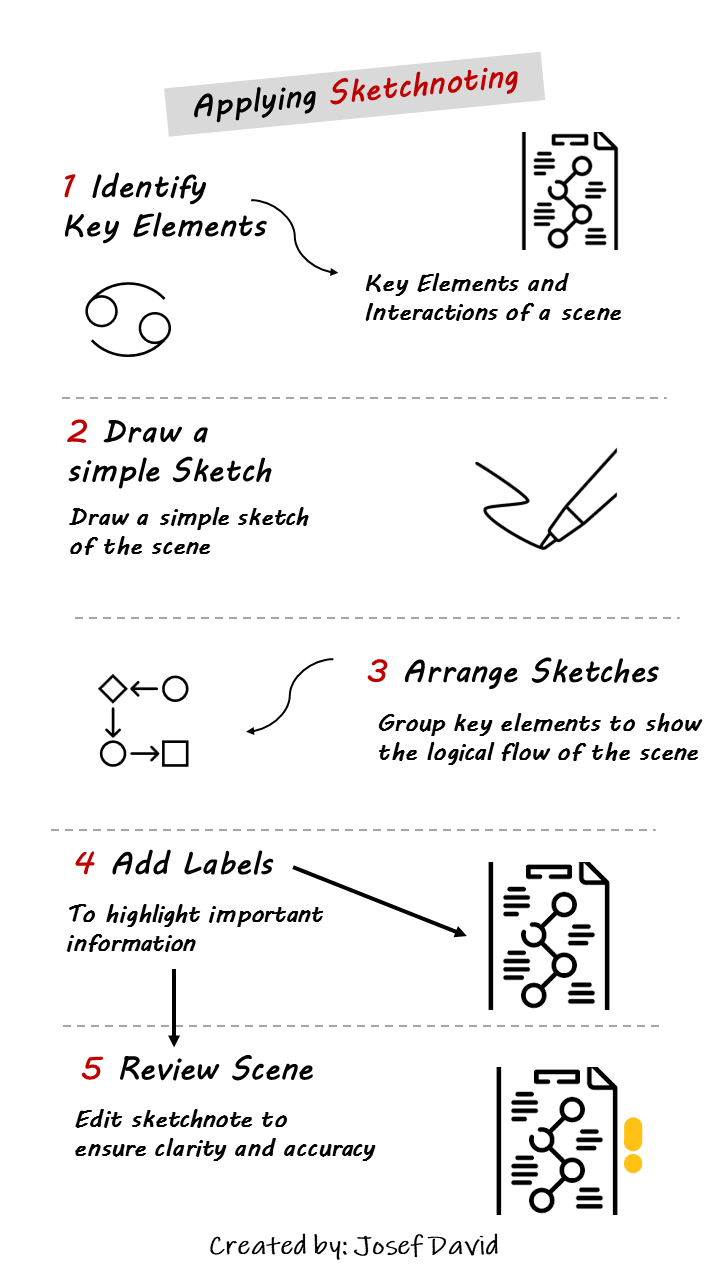A business scene is a visual representation of a business situation or process. It could be a depiction of a sales meeting, a customer service interaction, a production process, or any other business scenario.
The purpose of creating a business scene is to provide a clear and concise understanding of the situation or process, which can be used for training, problem-solving, decision-making, or communication purposes.
Storyboarding is an effective tool for creating strategic business scenes. It involves drawing a series of images to represent different stages or aspects of the business situation or process. Each image in the storyboard serves as a ‘scene’ that contributes to the overall understanding of the situation or process. The storyboard can be used as a visual guide for discussions, presentations, or reports.
Sketchnoting, on the other hand, is a method of note-taking that involves drawing simple sketches to represent ideas or information. It’s an effective way to visualize complex information in an easy-to-understand format. Sketchnoting can be used to visualize business scenes by sketching out the key elements and interactions in the scene.
Who can apply Sketchnoting?
Anyone who needs to understand, communicate, or make decisions about business situations or processes can apply sketchnoting for business scenes. This includes managers, team leaders, trainers, consultants, analysts, and even frontline staff. The ability to visualize complex information in a simple and clear format can greatly enhance their effectiveness in their roles.
The best time to apply sketchnoting for business scenes is when you need to understand or communicate complex information. This could be during a meeting, when preparing a report or presentation, when analyzing a problem or opportunity, or when planning a project or initiative.
To apply sketchnoting for business scenes:
1. Identify the key elements and interactions in the scene.
2. Draw simple sketches to represent these elements and interactions.
3. Arrange the sketches in a logical sequence or layout to show the flow or structure of the scene.
4. Add labels, notes, or annotations to provide additional information or clarification.
5. Review and revise the sketchnote as needed to ensure it accurately and clearly represents the scene.
In conclusion, creating strategic business scenes using storyboarding and visualizing business scenes with sketchnoting are powerful tools for understanding, communicating, and making decisions about business situations or processes. They enable you to transform complex information into simple and clear visual formats that can be easily understood and used by others.
As next steps, consider how you can apply these tools in your own work. Start by practicing sketchnoting in your daily tasks or meetings. Then try creating a storyboard for a simple business situation or process. As you gain confidence and skill, you can tackle more complex scenes and use these tools for strategic decision-making and communication.
